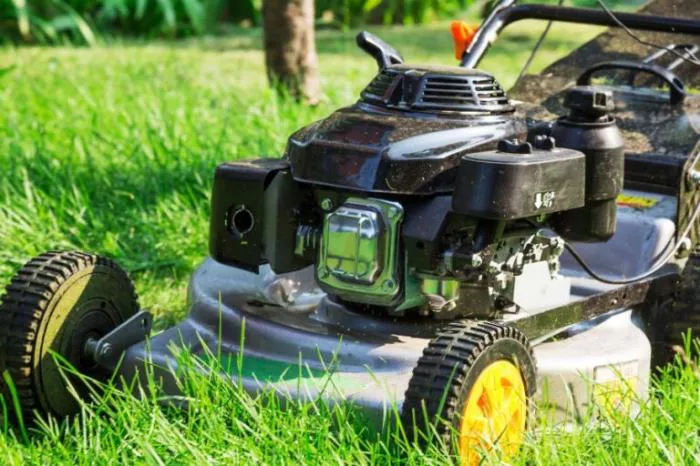A lawn mower’s throttle controls the engine speed, which directly affects performance. If the throttle isn’t working properly, the mower may run too fast, too slow, or not at all. Fixing the throttle requires understanding its components and troubleshooting common issues. This guide will walk you through the steps to diagnose and repair throttle problems on a lawn mower, ensuring smooth operation and preventing further engine damage. Whether your mower is stalling at high speeds or failing to accelerate, these solutions will help restore optimal throttle function.
Understanding the Throttle System
The throttle regulates the engine’s air and fuel mixture. It consists of several key parts:
Throttle Lever: This is the control you adjust to change the engine speed. It connects to the throttle cable or linkage.
Throttle Cable or Linkage: A flexible cable or rigid linkage transfers movement from the throttle lever to the carburetor.
Carburetor: The carburetor mixes air and fuel. The throttle controls how much air enters the engine, affecting speed.
Governor: Some mowers have a governor that automatically adjusts the throttle to maintain consistent engine speed under load.
If any of these parts are damaged or misadjusted, the throttle won’t work correctly.
Common Throttle Problems
Several issues can cause throttle failure. Identifying the problem is the first step in fixing it.
Sticking Throttle Lever: Dirt, rust, or debris can prevent the lever from moving smoothly.
Broken or Stretched Throttle Cable: A frayed or loose cable won’t transfer movement properly.
Misadjusted Linkage: If the linkage is bent or out of place, the throttle won’t respond correctly.
Carburetor Issues: A dirty or malfunctioning carburetor can disrupt throttle control.
Governor Malfunction: A faulty governor may cause erratic engine speed.
Tools Needed for Throttle Repair
Before starting, gather the necessary tools:
Screwdrivers: Flathead and Phillips for removing covers and adjusting screws.
Pliers: Useful for gripping and adjusting cables or linkages.
Wrenches: For loosening or tightening nuts and bolts.
Carburetor Cleaner: Helps remove dirt and debris from the carburetor.
Lubricant: Keeps moving parts like the throttle lever and cable working smoothly.
Replacement Parts: If any components are damaged, have new ones ready.
Step-by-Step Throttle Repair
Follow these steps to fix the throttle on your lawn mower.
Inspect the Throttle Lever
Start by checking the throttle lever. Move it back and forth to see if it sticks. If it feels stiff, clean and lubricate the pivot point. Remove any dirt or rust with a brush and apply a light machine oil. If the lever is broken, replace it.
Check the Throttle Cable or Linkage
Locate the throttle cable or linkage running from the lever to the carburetor. If it’s a cable, inspect for fraying or stretching. A damaged cable should be replaced. For linkages, ensure they are straight and properly connected. Adjust or replace bent linkages.
Adjust the Throttle Linkage
If the linkage is loose or misaligned, it may need adjustment. Loosen the mounting screws and reposition the linkage so it moves freely. Tighten the screws and test the throttle response.
Clean the Carburetor
A dirty carburetor can cause throttle problems. Remove the air filter and spray carburetor cleaner into the intake. Let it sit for a few minutes before restarting the engine. If the carburetor is severely clogged, disassemble and clean it thoroughly.
Test the Governor
If your mower has a governor, check its adjustment. The governor arm should move freely and return to its original position when released. If it’s stuck or loose, adjust the governor spring or linkage according to the manufacturer’s instructions.
Reassemble and Test
After making adjustments, reassemble all parts. Start the engine and test the throttle. It should respond smoothly to lever movements. If the problem persists, recheck each step or consult a professional.
Preventing Future Throttle Issues
Regular maintenance can prevent throttle problems.
Clean the Throttle Components: Dirt and debris cause sticking. Clean the lever, cable, and linkage periodically.
Lubricate Moving Parts: Apply oil to pivot points and cables to ensure smooth operation.
Inspect for Wear: Check cables and linkages for signs of wear and replace them before they fail.
Store Properly: Keep the mower in a dry place to prevent rust and corrosion.
When to Seek Professional Help
If you’ve followed all steps and the throttle still doesn’t work, the issue may be complex. A professional can diagnose problems like internal carburetor damage or engine issues. Don’t risk further damage by attempting advanced repairs without experience.
Conclusion
Fixing a lawn mower throttle involves inspecting and adjusting several components. By understanding how the throttle system works and following these steps, you can restore proper function. Regular maintenance will keep your mower running smoothly for years. If in doubt, consult a professional for assistance.
This guide provides a clear, step-by-step approach to throttle repair. With patience and the right tools, you can solve most throttle issues yourself. Keep your mower in top condition for a well-maintained lawn.
Related topics:
- HOW TO START A REMINGTON LAWN MOWER: A COMPLETE STEP-BY-STEP GUIDE
- HOW TO START CRAFTSMAN PLATINUM 7.00 LAWN MOWER?
- WHAT IS A GOVERNOR SPRING ON A LAWN MOWER?

